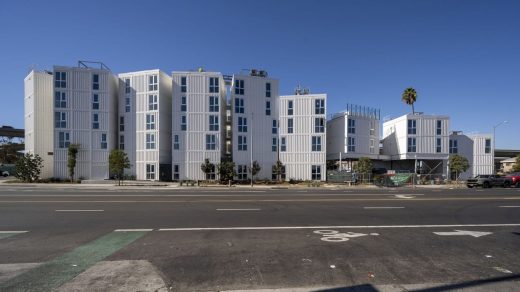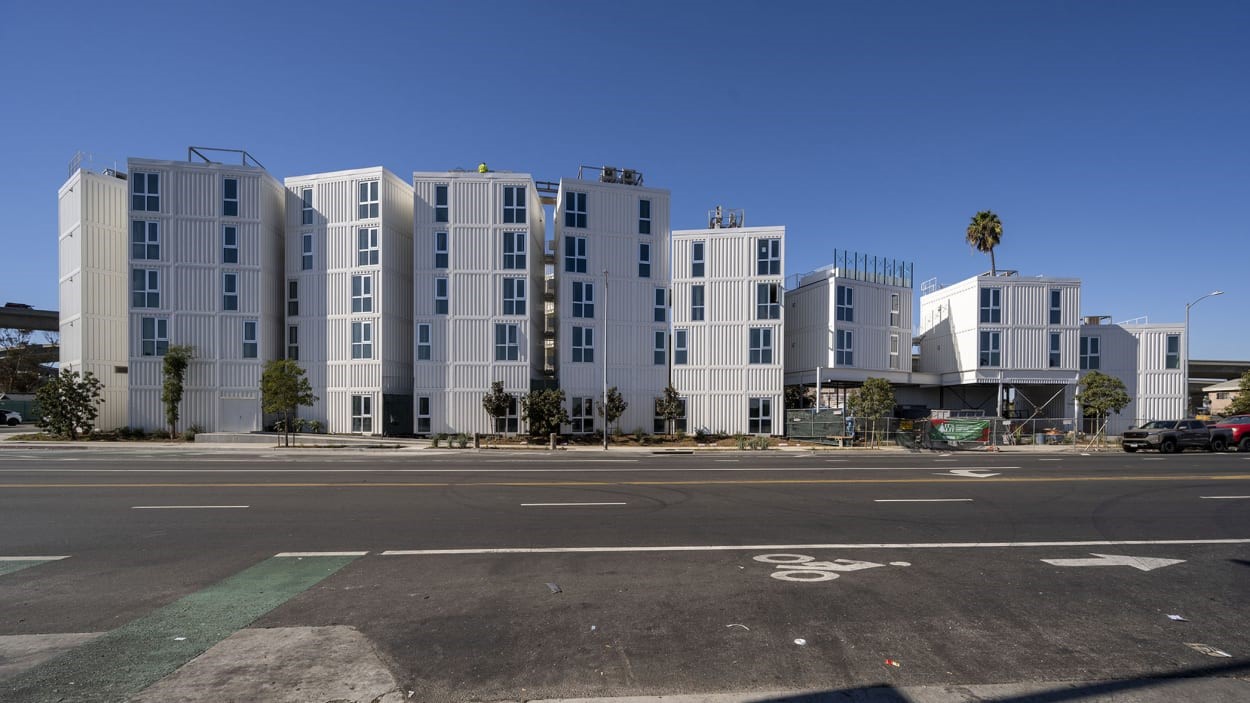An old median near a Los Angeles freeway sat empty for years. Now it’s affordable housing
By Ben Ikenson
From a car windshield flying across an overpass, the new housing development in South Los Angeles may look like a freight-load of cargo: shipping containers, stacked four- and five-high like giant Legos, appear randomly arrayed near one of California’s largest and busiest freeway interchanges. In fact, the complex is meticulously designed to make the most of its challenging site on a triangular median and old railroad right-of-way in the city’s Broadway-Manchester district. The corrugated modules are oriented to minimize ambient traffic noise and to surround an open space landscaped with vegetation and irrigated by greywater that will help offset air pollution.
When certified for occupancy early next year, “Isla Intersections” will provide 53 single-bedroom apartments, about 375-square-feet each, and onsite services—permanent supportive housing—for formerly unhoused individuals. Ten are allocated for formerly unhoused veterans.
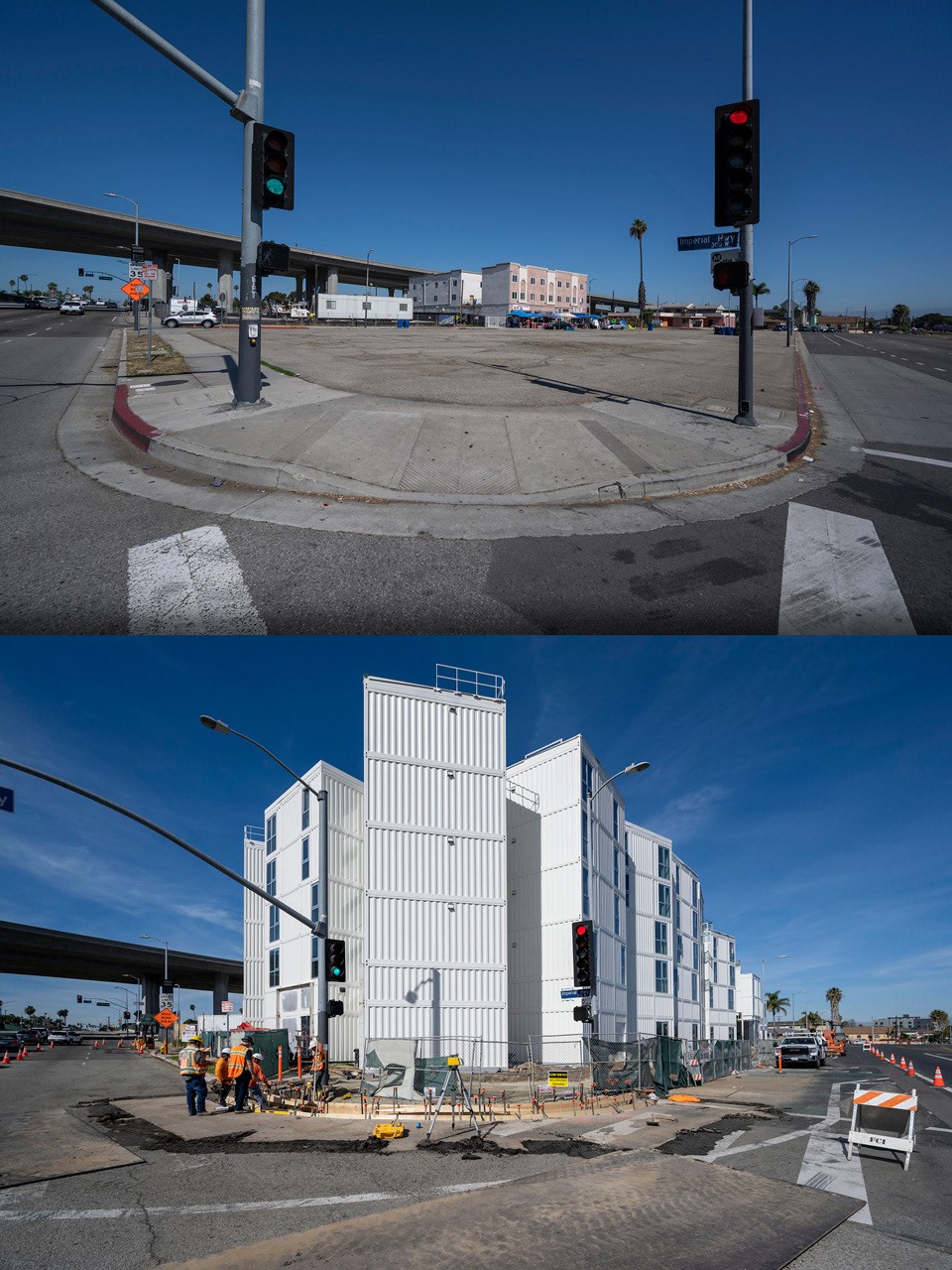
In 2018, the city of Los Angeles, which has the nation’s largest homeless population, awarded leases for some of its more than 1,700 underutilized parcels of properties to affordable housing developers. Nonprofit Holos Communities won the competitive solicitation process to develop the 20,000-square-foot site and was granted a 99-year lease for $1 a year. The price of real estate typically represents about 15% of total development costs.
“In LA, there are few financing tools the city can offer,” says Cristian Ahumada, executive director of Holos Communities. “So if you’re given land, that’s huge. That’s as good as money in the bank.”
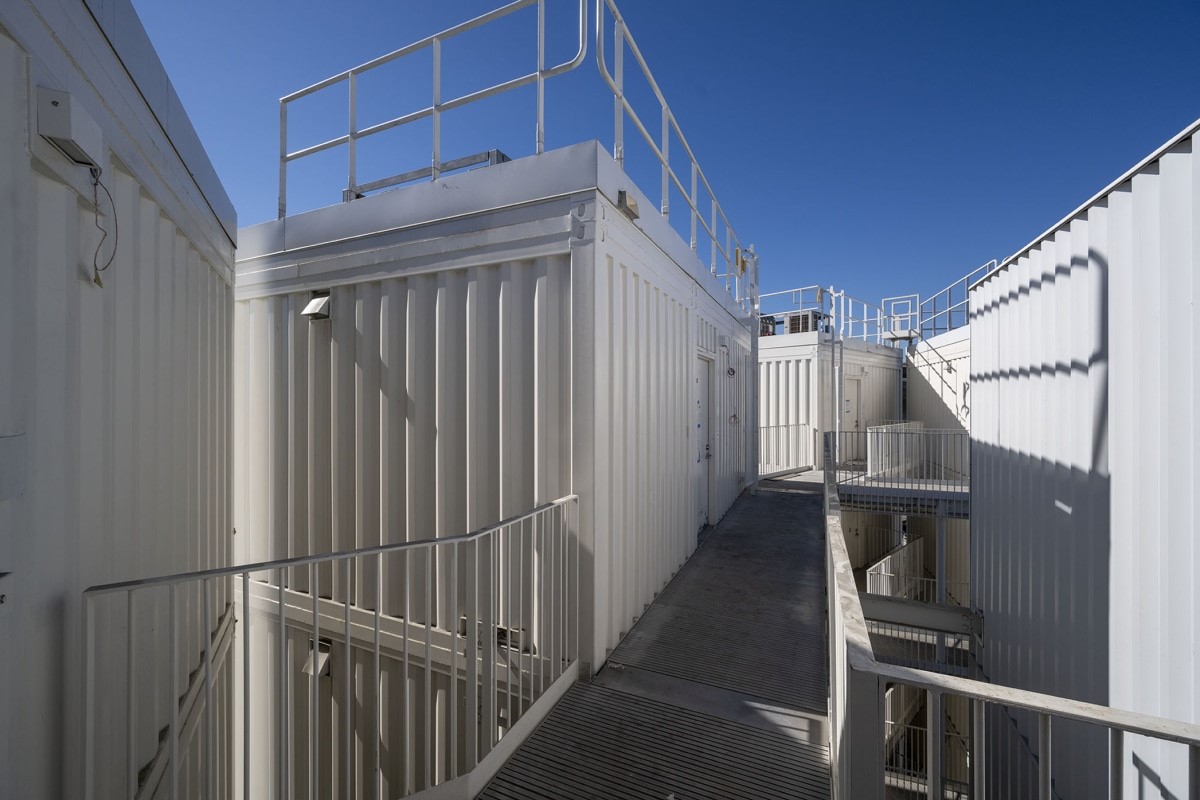
At a cost of around $38 million, Isla Intersections is one of a number of projects across the nation making use of surplus public property for affordable housing. In some cases, projects are mixing such housing into existing municipal amenities, or creating new ones, such as parks, libraries, fire stations, childcare facilities, and community centers. Cities across the map—New York, New Orleans, Milwaukee, Seattle, Boston, Washington, D.C., and many more—are underwriting projects that fit their space and help fill an urgent need.
***
Against the backdrop of the least affordable housing market since 1984, urban landscapes are seeing more displacement of longtime residents and increased housing insecurity. In just the past year, homelessness surged by 11%, the largest spike on record.
“Combined with longstanding housing supply shortages, rent increase in recent years is far outpacing income growth,” says Brett Theodos, a senior fellow at the Urban Institute. “The housing that is produced often targets the higher-income spectrum and not enough is filtering to middle- or lower-income segments. At the same time, in growing cities, prices can appreciate really rapidly until markets begin to leapfrog. When cities in California get too expensive, demand may jump to Denver, until it gets too expensive there, and then it goes to Austin, or Boise, or Atlanta, and so on—as rents easily zoom past what many can afford.”
While inflation may be slowing, costs are still high and so are interest rates, which affect most housing since it’s built with debt. So Theodos says that as affordable housing investment becomes “harder to pencil out to make the math work,” public-private partnerships are increasingly trying to fill the gaps.
“The public sector—cities, counties, local government agencies—can bring subsidy to the table in the form of underutilized land, which can be really valuable and determinative,” he says. “And the private sector knows how to build things, maybe not always on time or on budget, but with the expertise to see these projects through.”
Theodos sees many possibilities for such projects: on vacant properties or surface parking lots on highly valuable land in downtown centers; with government structures that require rehabbing; on existing properties unrelated to housing like single-story libraries in neighborhoods with six- or seven-story buildings.
“A number of entities are looking back on historic [mixed land use models] . . . to move forward and make better use of space, often with social equity purposes along with the provision of affordable housing,” he says.
***
In Denver, the working class, predominantly Hispanic community of Globeville bears the distinction of having “the most polluted zip code in the country.” Part of the neighborhood is located on a federal Superfund Site—the legacy of large metal smelting operations and other dirty industries. The area is also bisected by two interstates and physically cut off from the rest of the city.
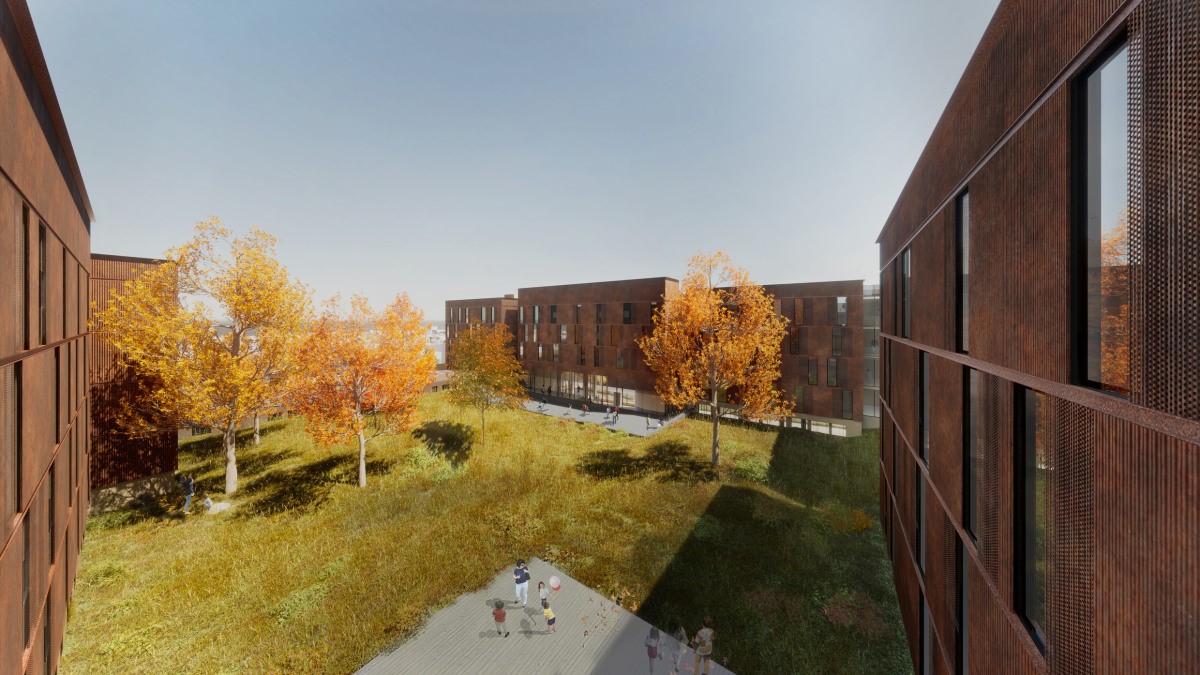
“Everything you can talk about with what’s wrong with how cities were built and environmental justice impacts, you see that in Globeville,” says David Block.
An architect and urban planner by trade, Block manages development for the Chicago-based for-profit Evergreen Real Estate Group. After responding to Denver’s RFP, the company is pursuing a $100 million project to create a 300,000-square-foot complex combining a public branch library with 170 units of affordable housing for families facing the threat of displacement in the Globeville area.
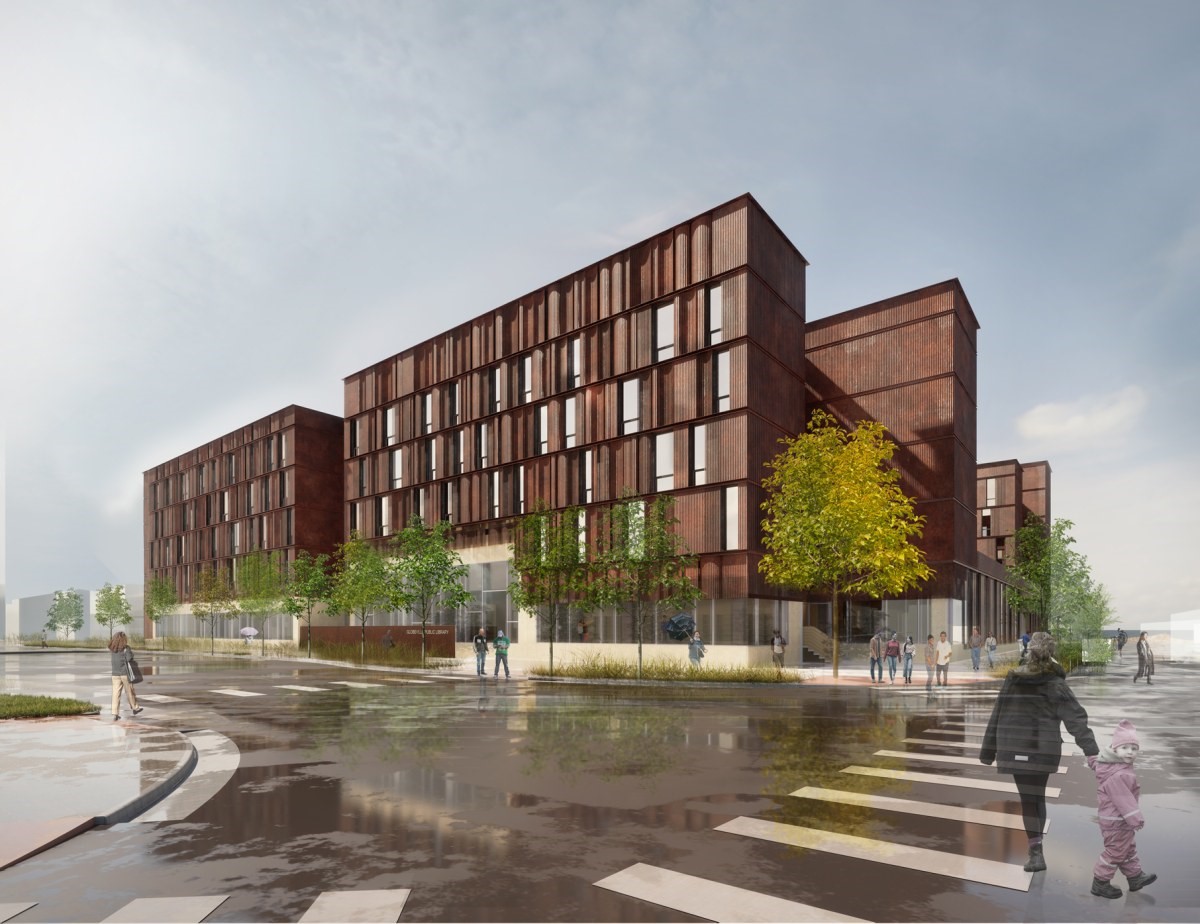
Across the highway, he says, “areas have been growing rapidly over the past five years, with block after block of high-end market rate housing that draws young professionals probably paying $3,000 a month. And while Denver is growing really fast, it’s also experiencing a huge homelessness problem.”
Block is in the final stages of what he calls “lasagna financing,” as it usually involves a dozen or more sources. The project, he says, will likely be finished in 2026. But his company has experience in this niche, having produced two library/affordable housing projects in Chicago.
“The Chicago mayor at the time charged the housing authority to not only do these colocated projects but to make them really stunning,” says Block.
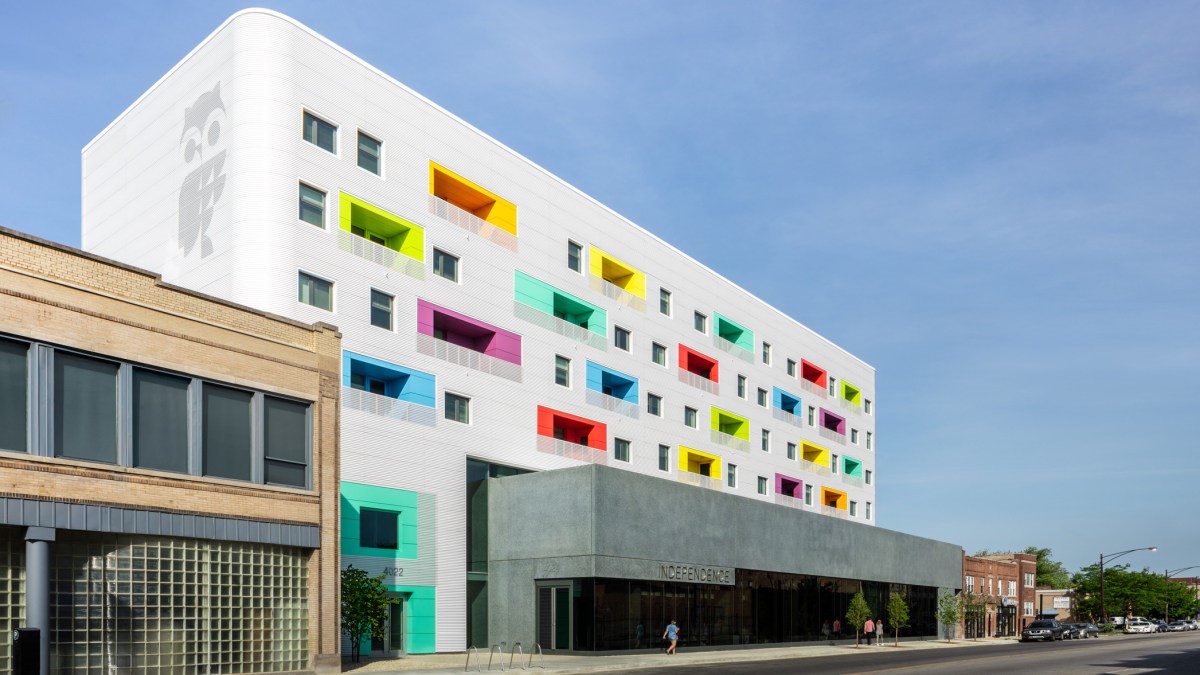
The resulting Independence Library and Apartments is a 60,000-square-foot structure with 44 affordable housing units for seniors. The building features a modernistic façade with colorful recessed balconies for tenants and a spacious public library with abundant natural light.
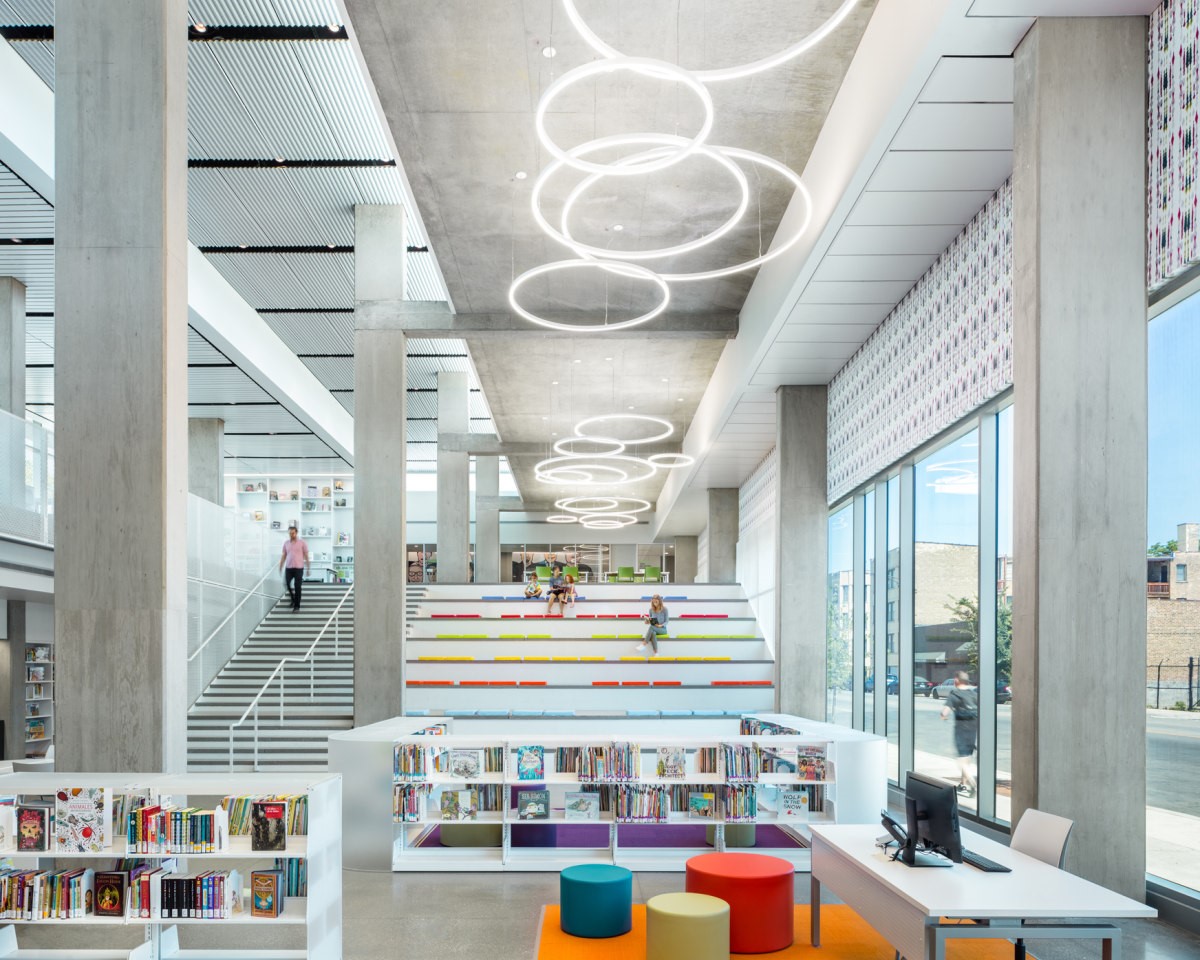
Block is collaborating with the same architect on the Globeville project, which will be all-electric, per Denver code. As with Isla Intersections, the design is informed by the site’s unusual shape. Two four-story, U-shaped residential buildings constructed of cross-laminated timber are set on a ground-level foundation of poured-in-place concrete that houses the library. A neighborhood coalition is working to include a café that will double as a community space, with job fairs and translation services, among others.
***
Block readily admits such projects are fraught with challenges—on top of long, complex financing processes that typically involve federal and state tax credits, tax-exempt bonds, utility incentives, loans, grants, donations, and other sources. They also contend with zoning issues, lengthy permitting and approval processes, and much more.
Not least of which, they compete for funding from very limited city housing coffers. In San Jose, California, among the country’s most expensive housing markets, with a median home price of $1.8 million, the mayor is fast-tracking six quick-build sites with mini shipping containers of 80 square feet to accommodate homeless people. Some critics regard this as a costly Band-Aid approach to an issue that demands more substantive intervention; others appreciate the need for interim shelter, but are wary of diverting funding from permanent affordable housing.
“We haven’t done our work in America to create the conditions to build affordable housing at scale because of a massive lack of political will, and instead of solving the problem, we’re going to create more temporary options . . . and call that a win,” says Jennifer Loving, CEO of San Jose-based nonprofit Destination: Home.
Loving’s organization has helped facilitate scores of affordable housing projects in Silicon Valley, often for extremely low-income households and chronically homeless families.
“Our system hasn’t ever developed enough deeply affordable housing, or enough affordable housing in general, and the federal government has failed,” she says. “States haven’t created enough resources, and the HUD budget . . . is so persistently underfunded, which leads to [insufficient] funding for municipal housing authorities.”
Affordable housing projects also face NIMBY pushback, especially with infill: “Often, existing residents object to the creation of more density or more affordable units,” says Urban Institute’s Theodos. “Not everyone wants the single-story library to be built up seven stories and include additional residents on their block.”
In Eureka, California, High Country News recently reported that a “mortgage and real estate tycoon” is evidently exploiting an environmental law to thwart affordable housing planned on city-owned parking lots. The piece cites a study that found, between 2019 and 2021, the California Environmental Quality Act was used to challenge 40% of the state’s housing developments.
Furthermore, when it comes to putting affordable housing on existing public property, it’s unlikely there will ever be a one-size-fits-all formula.
“Every site’s different,” says Theodos. “This isn’t like just plowing into an empty cornfield. These are mostly constrained properties, so everything has to be uniquely designed, which is great from a land-use and environmental perspective, but there’s really no easy off-the-shelf solution.”
***
When the developer was awarded the lease for the triangular site by the freeway interchange in Los Angeles, it knew the property had potential in a “transit-oriented community” near several metro light rail and bus lines. The TOC designation proffers land use concessions, allows for more density, and eliminates costly parking lot requirements.
“This project challenges the restrictively zoned single-story residential suburban track model that revolves around the automobile and contributes so much to LA’s housing crisis,” says Ahumada. “And when addressing this crisis, of which homelessness is a very visible part, it’s impossible not to talk about global warming and social equity.”
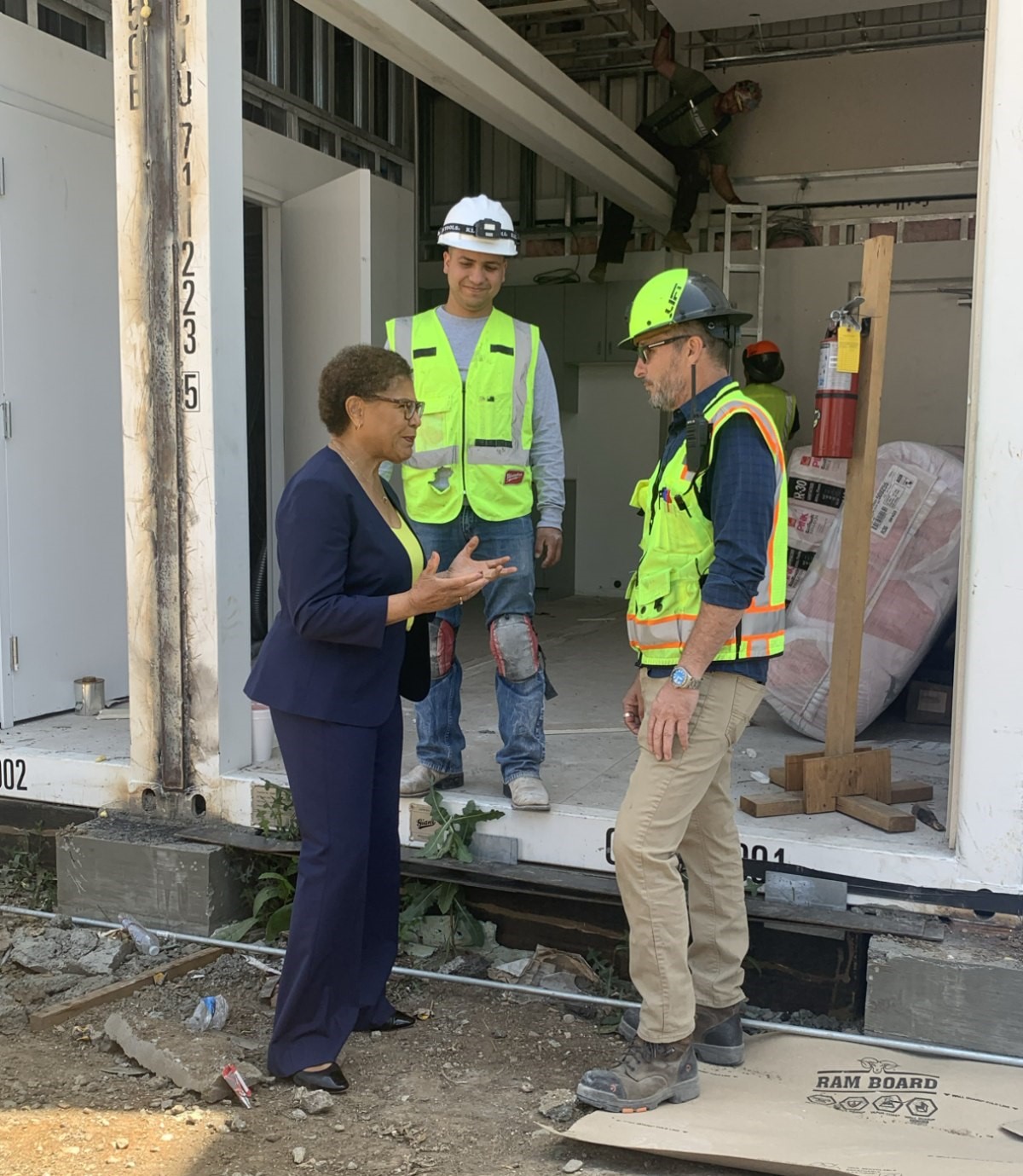
Last December, new mayor Karen Bass declared a state of emergency and launched a program to help move people from encampments to interim housing, where social service agencies can provide “wrap-around care to each participant to transition . . . into permanent housing.” Earlier this month, she signed an order to expedite construction of low-income housing. Still, affordable housing in LA will likely be in “extreme” short supply for decades to come, according to a McKinsey report.
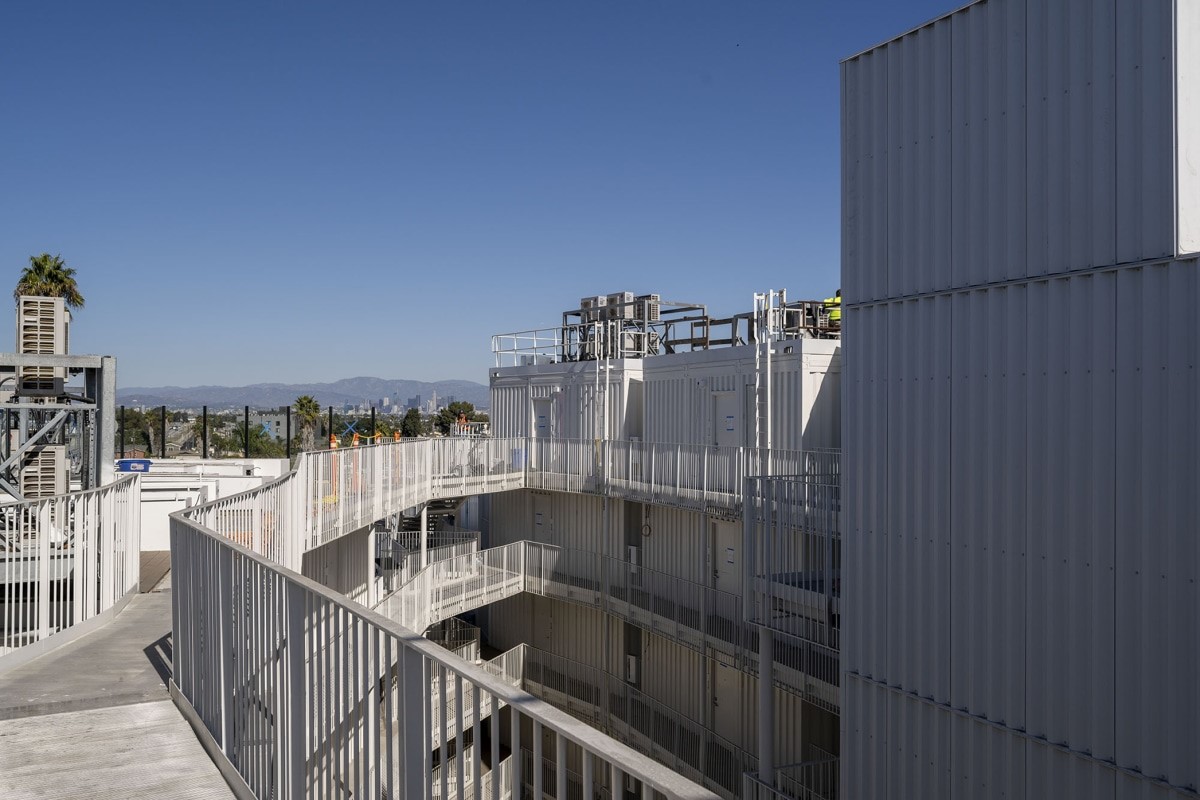
In the meantime, Ahumada hopes Isla Intersections sets some precedent. In addition to mental health and other support services for tenants, the building will house commercial space “to be activated with a BIPOC local business or public amenity to help the local economy and community,” he says.
Ahumada is also working with park planners to extend the project’s landscaping scheme into the broader public domain. The property is expected to become an anchor for a long-planned neighborhood revitalization project that will include sidewalk and crossing improvements, bicyclist accommodations, and more street-side trees.
“We want to be an example that shows how these projects can be . . . integrated into their surroundings,” he says. “At the same time, cities must be circumspect in how they manage their growth.”
(7)

